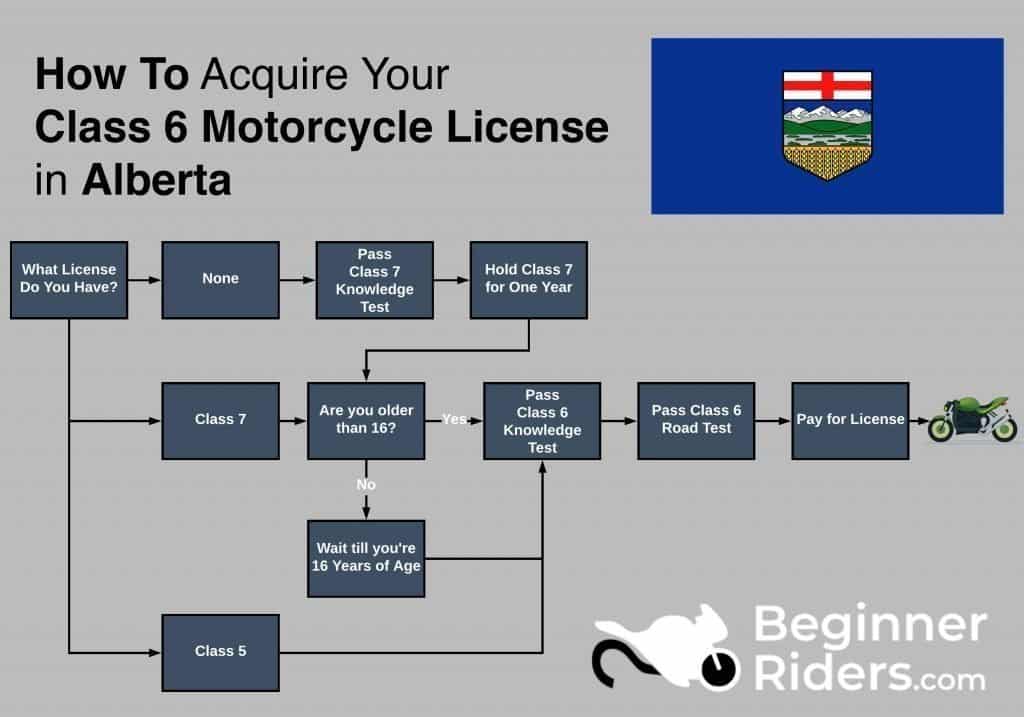How to Get Your Bike License in Alberta, If you’re a motorcycle enthusiast or simply looking to explore the open roads on two wheels, obtaining a bike license in Alberta is your first step. This license allows you to legally ride a motorcycle and ensures that you have the necessary skills and knowledge to do so safely. In this blog post, we’ll walk you through the process of getting your bike license in Alberta, covering eligibility requirements, the application process, and tips for success.
Types of Motorcycle Licenses in Alberta
In Alberta, there are different classes of motorcycle licenses, depending on your experience and the type of motorcycle you wish to ride:
- Class 6 License: This is a full motorcycle license that allows you to operate any type of motorcycle.
- Class 6 GDL (Graduated Driver’s License): This is part of the Graduated Driver Licensing program for new riders and comes with certain restrictions.
Eligibility Requirements
Before you can apply for a motorcycle license in Alberta, you must meet the following eligibility criteria:
- Age: You must be at least 16 years old.
- Learner’s License: You must hold a Class 7 (Learner’s) license or higher.
- Knowledge Test: Pass a written knowledge test specific to motorcycle operation.
- Vision Test: Pass a vision test to ensure you meet the necessary visual standards.
- Road Test: Successfully complete a motorcycle road test.
Steps to Obtain a Motorcycle License in Alberta
Here’s a step-by-step guide to help you get your motorcycle license:
- Study for the Knowledge Test
- Review the Alberta Motorcycle Operator’s Handbook. This guide covers essential information about motorcycle operation, including road rules, safety practices, and riding techniques.
- Pass the Knowledge Test
- Visit an Alberta Registry Agent office to take the written knowledge test. The test includes multiple-choice questions about motorcycle operation and road safety.
- Vision Test
- While at the registry office, you will also need to pass a vision test. Ensure you have corrective lenses if needed.
- Get Your Class 7 License
- If you do not already have a Class 7 license, you will need to obtain one. This allows you to practice riding a motorcycle under certain conditions.
- Enroll in a Motorcycle Safety Course (Optional but Recommended)
- Consider enrolling in a motorcycle safety course. These courses provide practical training and can help you pass your road test. Some courses may even offer an exemption from the road test upon successful completion.
- Practice Riding
- Gain practical experience riding a motorcycle. Practice in a safe, controlled environment and gradually progress to more complex riding situations.
- Book and Pass the Road Test
- Schedule your road test through a registry office. During the test, you will need to demonstrate your ability to safely operate a motorcycle. This includes starting, stopping, turning, and navigating various traffic situations.
- Receive Your Class 6 GDL License
- Upon passing the road test, you will receive your Class 6 GDL license. This license has certain restrictions, such as zero alcohol tolerance and no riding between midnight and 5 a.m.
- Progress to a Full Class 6 License
- After holding your Class 6 GDL license for a minimum of two years, you can apply for a full Class 6 license. This involves passing an advanced road test.
Tips for Success
- Study Diligently: Thoroughly review the Alberta Motorcycle Operator’s Handbook to ensure you understand all the rules and regulations.
- Take a Safety Course: Enrolling in a motorcycle safety course can greatly enhance your riding skills and confidence.
- Practice Regularly: Spend plenty of time practicing your riding skills in various conditions to prepare for the road test.
- Stay Calm: During your tests, remain calm and focused. Confidence and composure are key to demonstrating your abilities effectively.
- Follow the Rules: Always adhere to traffic laws and safety guidelines while practicing and during your test.
Conclusion
Getting your bike license in Alberta is a rewarding process that opens up a world of adventure on two wheels. By following the steps outlined in this guide and preparing thoroughly, you can obtain your motorcycle license and enjoy the freedom of the open road. Safe riding!
you might also like these:
